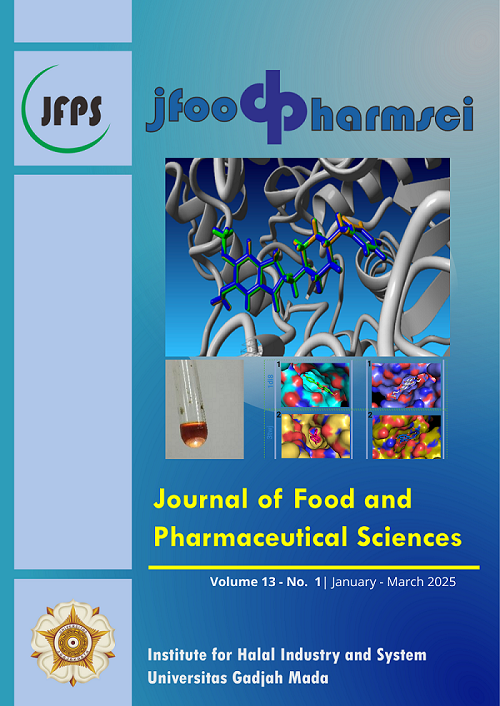Comparison of Vitamin B1 (Thiamin hydrochloride) Level in Brown Rice (Oryza nivara S.D.Sharma & Shastry) and Cooked Brown Rice by Alkalimetry Methods
Abstract
Brown rice (Oryza nivara S.D.Sharma & Shastry) is a rice variety that belongs to the Graminae family. Brown rice contains vitamins A, B, C, Zn and B complex. Vitamin B1 is one type of vitamin that is not stable. Its stability is influenced by pH, temperature and processing. The purpose of this study was to determine the comparison of vitamin B1 levels in brown rice and cooked brown rice. The study began with a qualitative test of vitamin B1 using 10% Pb acetate and 6 N NaOH if a yellow color and brown precipitate formed after heating, the sample was positive for vitamin B1. Determination of vitamin B1 levels in brown rice and cooked brown rice by alkalimetric method using NaOH as a titer that has been standardized in advance with potassium biftalat 0.1 N. Data analysis using the Mann Whitney test is an alternative to the Independent T-test if the t-test requirements are not met. The Mann Whitney test is used to determine whether or not there is a difference between two independent samples. The results of the qualitative test of vitamin B1 in brown rice and cooked brown rice showed that the samples were positive for vitamin B1. The quantitative test results of vitamin B1 levels in brown rice and cooked brown rice obtained an average of 12.40 mg / kg and 4.96 mg / kg. Statistical test results, the significance value (p) = 0.043, where p < 0.05 means there is a significant difference in vitamin B1 levels in brown rice and cooked brown rice. The conclusion of this study is that vitamin B1 levels in brown rice are higher than vitamin B1 levels in cooked brown rice.
































